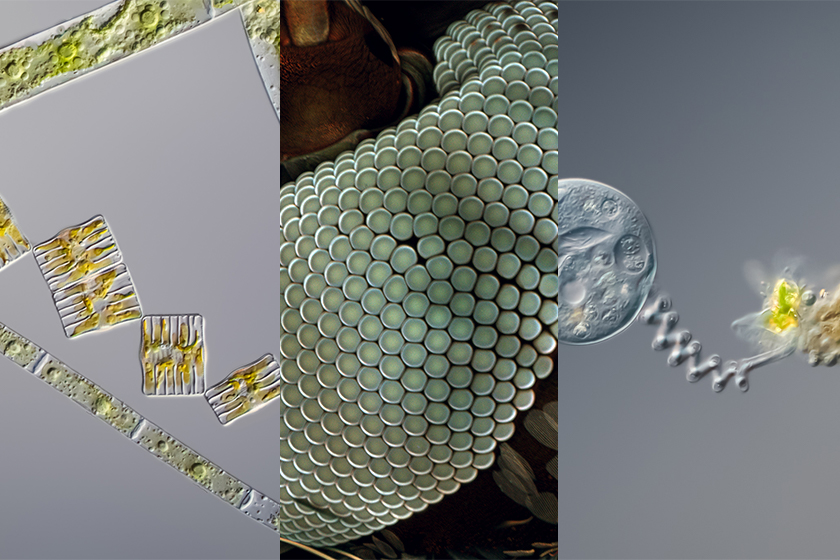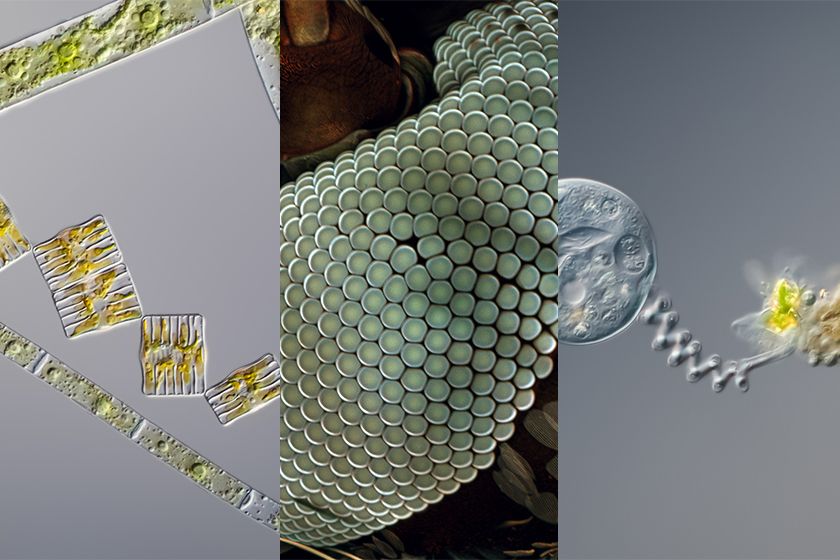This month, our most popular images from the Olympus Life Science Instagram account come from creatures of all sizes. From diatoms to insects to monkeys, here are our fan favorites from under the microscope for May.

Did you know? Because diatoms are particular about the quality of water in which they live, they are a great resource to environmentalists when assessing and monitoring the biotic condition of waters. In addition, their cell walls are made of silica, so they literally live in glass houses!
Image courtesy of Håkan Kvarnström.

While we may not usually get close enough to look them in the eye, we see these common insects all over during the warmer months. This mosquito was flying around one of our applications team members’ backyard before being caught for this close-up.
Captured on an Olympus FLUOVIEW™ FV3000 confocal microscope with a 10X X Line™ objective.
Image courtesy of James Lopez, Manager, Olympus Life Science Applications Group.

Another incredible submission from this year's Global Image of the Year Award! This striking image shows the color-coded reconstruction of confocal images of tubulin (microtubuli) in mitotic COS7 monkey fibroblast cells.
Image courtesy of Daniela Malide, 2019 Global Image of the Year Award Honorable Mention.

Shown here is a marine ciliate known for its stalk that attaches onto various substrates. The stalk’s myonemes (contracting structures) allow them to pull the cell body against substrates. The organism is named “Vorticella” due to its beating cilia, which create whirlpools, or vortices.
Image courtesy of Håkan Kvarnström.

California gardens are full of fun things to look at under the microscope! In addition to the mosquito pictured above, this ladybug was also found in our applications team member’s backyard. Fun fact: ladybugs beat their wings about 85 times per second when they fly!
Captured on an Olympus FLUOVIEW FV3000 confocal microscope with a 10X X Line objective.
Image courtesy of James Lopez, Manager, Olympus Life Science Applications Group.
Related Videos
And for a bonus this month we present a video from fan favorite Nomadic Nostoc. “If you think that eight arms are a lot, you should definitely check this out! This micro-creature here, Leptogromia operculata, has hundreds of ‘arms.’ They can crawl, stick to things and most importantly they can merge with each other to form bigger versions of themselves. The arms behave a bit like fractals. Forget liquid metal from the Terminator universe! Leptogromia really is pushing the boundaries of the term ‘cell.’ Why being confined in one tiny blob of phospholipids when you can venture out in all directions at once?! The filopodia of this very strange amoeba even appear in my dreams!
Leptogromia is an amoeba brackish water environments in the mouths of rivers and seems to be rather hard to find. At first sight it looks a bit like its cousins, freshwater testate amoebas, but oh boy they are different! The way pseudopodia in L. operculata form and behave is just so odd. Leptogromia seems to have more in common with Radiolarians, although it doesn’t build any fancy shells. If you watch the footage to the end, you will stumble upon a short clip taken in polarized light. It reveals a stupendous amount of crystals in the cell. How come these creatures amass such a massive amount of crystals without removing them from the cell? How come they don’t just fill up with water via osmosis and explode? Might their cell be impenetrable to water? Many questions about this mysterious creature.”
Video and caption courtesy of @nomadicnostoc.
To see more images like these, be sure to follow us on Instagram at @olympuslifescience!
Interested in sharing your own images?
Visit our image submission site.
Related Content
Announcing the Winners of Our 2019 Global Image of the Year Award
Stereo Microscope Primer: Transmitted Light Observation Methods


